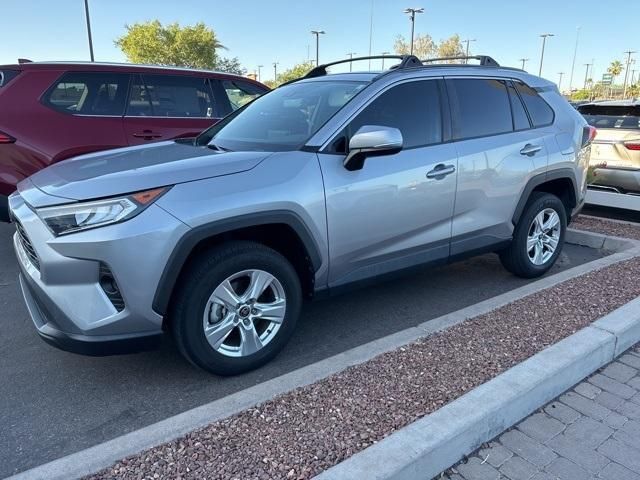
2021 TOYOTA RAV4VIN: 2T3P1RFV9MW151813
Historical Records
Maintenance inspection completed
Vehicle declared a total loss by an insurance company
Collision damage reported
| Year | 2021 |
| ODO | 6869 mi |
| Seller | Hidden text (Hidden text) |
| MSRP | $1311 |
| Location | Portland, OR, 97225 |
| Date | appeared 3 months ago latest price $5080 sale post disappeared 2019-11-30 |
| Sale Website Type | classifieds |
| Notes | |
| Hidden text | |



| Body Style | SUV |
| Color | Blue Flame |
| Color (Interior) | Black |
| Transmission | 8-Speed Automatic |
| Engine | 2.5L I4 16V PDI DOHC |
| Drive | All-wheel Drive |
| Fuel Type | Gasoline |
- 8951
- ABS And Driveline Traction Control
- Hidden text
- Automatic Headlights
- Hidden text
- Brake Actuated Limited Slip Differential
- Hidden text
- Clock: In-radio display
- Hidden text
- Diameter of tires: 17.0"
- Hidden text
- Dual Vanity Mirrors
- Hidden text
- Front Hip Room: 54.3"
- Hidden text
- Fuel Consumption: Highway: 33 mpg
- Hidden text
- Instrumentation: Low fuel level
- Hidden text
- Lane Departure Warning: Active
- Hidden text
- Overall Length: 180.9"
- Hidden text
- Power Driver Seat
- Hidden text
- Radio data system
- Hidden text
- Rear view camera
- Hidden text
- Roof rails
- Hidden text
- Spare Tire Mount Location: Inside under cargo
- Hidden text
- Telematics
- Hidden text
- Tires: Width: 225 mm
- Hidden text
- Urethane steering wheel trim
- Hidden text
- 4 Door
- Hidden text
- Adjustable Steering Wheel
- Hidden text
- Auxilliary transmission cooler
- Hidden text
- Bucket Seats
- Hidden text
- Coil rear spring
- Hidden text
- Door reinforcement: Side-impact door beam
- Hidden text
- External temperature display
- Hidden text
- Front Side Air Bag
- Hidden text
- Gross vehicle weight: 4,610 lbs.
- Hidden text
- Integrated satellite communications
- Hidden text
- Manual child safety locks
- Hidden text
- Overhead console: Mini with storage
- Hidden text
- Power remote driver mirror adjustment
- Hidden text
- Rear Head Air Bag
- Hidden text
- Rear door type: Liftgate
- Hidden text
- Seatbelt pretensioners: Front
- Hidden text
- Split rear bench
- Hidden text
- Tire Pressure Monitor
- Hidden text
- Transmission w/Dual Shift Mode
- Hidden text
- Vehicle Emissions: LEV3-ULEV50
- Hidden text
- 4 Cylinder Engine
- 5112
- Adaptive Cruise Control
- Hidden text
- Auxiliary Audio Input
- Hidden text
- Braking Assist
- Hidden text
- Coil front spring
- Hidden text
- Door pockets: Driver and passenger
- Hidden text
- Engine Immobilizer
- Hidden text
- Front Shoulder Room: 57.8"
- Hidden text
- Gasoline Fuel
- Hidden text
- Integrated Roof Antenna
- Hidden text
- Left rear passenger door type: Conventional
- Hidden text
- Overall height: 67.0"
- Hidden text
- Power Steering
- Hidden text
- Rear Defrost
- Hidden text
- Rear center seatbelt: 3-point belt
- Hidden text
- Seatback storage: 1
- Hidden text
- Speed-proportional electric power steering
- Hidden text
- Tilt and telescopic steering wheel
- Hidden text
- Traction Control
- Hidden text
- Variable intermittent front wipers
- Hidden text
- 4-Wheel Disc Brakes
- Hidden text
- All Wheel Drive
- Hidden text
- Back-Up Camera
- Hidden text
- Bucket Front Seats
- Hidden text
- Cross-Traffic Alert
- Hidden text
- Driver Adjustable Lumbar
- Hidden text
- Fog Lamps
- Hidden text
- Front ventilated disc brakes
- Hidden text
- Headlights off auto delay
- Hidden text
- Interior air filtration
- Hidden text
- Manufacturer's 0-60mph acceleration time (seconds): 6.6 s
- Hidden text
- Pass-Through Rear Seat
- Hidden text
- Power remote passenger mirror adjustment
- Hidden text
- Rear Head Room: 39.5"
- Hidden text
- Rear seats center armrest
- Hidden text
- Side airbag
- Hidden text
- Stability Control
- Hidden text
- Tire Pressure Monitoring System
- Hidden text
- Transmission hill holder
- Hidden text
- Video Monitor Location: Front
- 6368
- 5 USB Ports
- Hidden text
- Apple CarPlay/Android Auto mirroring
- Hidden text
- Blind Spot Monitor
- Hidden text
- Cargo tie downs
- Hidden text
- Cruise controls on steering wheel
- Hidden text
- Driver Vanity Mirror
- Hidden text
- Forward Collision Mitigation : Toyota Safety Sense (TSS) 2.0
- Hidden text
- Front fog/driving lights
- Hidden text
- Heated driver mirror
- Hidden text
- Keyless Entry
- Hidden text
- Mobile Hotspot Internet Access
- Hidden text
- Passenger Airbag
- Hidden text
- Power Windows
- Hidden text
- Rear Leg Room: 37.8"
- Hidden text
- Regular front stabilizer bar
- Hidden text
- SiriusXM AM/FM/HD/Satellite Radio
- Hidden text
- Steering Wheel Audio Controls
- Hidden text
- Tires - Rear All-Season
- Hidden text
- Turn signal in mirrors
- Hidden text
- Wheel Width: 7
Model Analytics & Market Report
Depreciation
| Year | Average Mileage | Average Price | % Left | % Lost | ||
|---|---|---|---|---|---|---|
| 2021 MSRP | 0 mi | $30,710 | — | — | 100% | 0% |
| 2021 | 10,177 mi | $35,784 | −$5,074 | −16.52% | 116.52% | -16.52% |
| 2022 | 20,354 mi | $30,999 | +$4,785 | +13.37% | 100.94% | -0.94% |
| 2023 | 30,531 mi | $29,739 | +$1,260 | +4.06% | 96.84% | 3.16% |
| 2024 | 40,708 mi | $27,682 | +$2,057 | +6.92% | 90.14% | 9.86% |
| 2025 | 50,885 mi | $26,863 | +$819 | +2.96% | 87.47% | 12.53% |
| → Visit 2021 TOYOTA RAV4 depreciation page to see full data. | ||||||
Price vs Mileage
| Mileage | Average Price | Sample Size |
|---|---|---|
| 5,000 mi | $30,748 | 84 sales |
| 10,000 mi | $30,179 | 224 sales |
| 15,000 mi | $29,708 | 429 sales |
| 20,000 mi | $28,897 | 660 sales |
| 25,000 mi | $28,671 | 818 sales |
| 30,000 mi | $28,046 | 833 sales |
| → Visit 2021 TOYOTA RAV4 depreciation page to see full data. | ||
VIN Decoder — 71 records
Anti-lock Braking System (ABS) means a portion of a service brake system that automatically controls the degree of rotational wheel slip during braking by: (1) Sensing the rate of angular rotation of the wheels; (2) Transmitting signals regarding the rate of wheel angular rotation to one or more controlling devices that interpret those signals and generate responsive controlling output signals; and (3) Transmitting those controlling signals to one or more modulator devices that adjust brake actuating forces in response to those signals.
An auto-reverse system enables power windows and sunroofs on motor vehicles to automatically reverse direction when such power windows and panels detect an obstruction. This feature can prevent children and others from being trapped, injured, or killed by the power windows and sunroofs.
ESC is a computerized technology that improves a vehicle's stability by detecting and reducing loss of traction (skidding). When ESC detects loss of steering control, it automatically applies the brakes to help steer the vehicle in the driver's intended direction. Braking is automatically applied to wheels individually, such as the outer front wheel to counter oversteer, or the inner rear wheel to counter understeer. Some ESC systems also reduce engine power until control is regained.
A keyless ignition system permits starting a car without a physical key being inserted into an ignition. Instead, a small device known as a "key fob" transmits a code to a computer in the vehicle when the fob is within a certain close range. When the coded signal matches the code embedded in the vehicle's computer, a number of systems within the car are activated, including the starter system. This allows the car to be started by simply pressing a button on the dashboard while the key fob is left in a pocket or a purse. The vehicle is usually shut down by pushing the same button.
A TPMS is an electronic system designed to monitor the air pressure inside the pneumatic tires on various types of vehicles. TPMS can be divided into two different types - direct and indirect. Direct TPMS employ pressure sensors on each wheel, either internal or external. The sensors physically measure the tire pressure in each tire and report it to the vehicle's instrument cluster or a corresponding monitor. Indirect TPMS does not use physical pressure sensors but measure air pressures by monitoring individual wheel rotational speeds and other signals available outside of the tire itself.
When the traction control computer detects a driven wheel or wheels spinning significantly faster than another, it invokes an electronic control unit to apply brake friction to wheels spinning due to loss of traction. This braking action on slipping wheels will cause power transfer to the wheels with traction due to the mechanical action within the differential.
A backup camera, also known as a rearview video system, helps prevent back-over crashes and protects our most vulnerable people - children and senior citizens - by providing an image of the area behind the vehicle. A backup camera helps the driver see behind the vehicle while in reverse.
A CIB system is an automatic emergency braking system designed to detect an impending forward crash with another vehicle. CIB systems automatically apply the brakes in a crash imminent situation to slow or stop the vehicle, avoiding the crash or reducing its severity, if the driver does not brake in response to a forward collision alert.
A DBS system is an automatic emergency braking system designed to detect an impending forward crash with another vehicle. DBS systems automatically supplement the driver's braking in an effort to avoid a crash if the driver does not brake hard enough to avoid it.
An FCW system monitors a vehicle's speed, the speed of the vehicle in front of it, and the distance between the vehicles. If the vehicles get too close due to the speed of either vehicle, the FCW system will warn the driver of the rear vehicle of an impending crash so that the driver can apply the brakes or take evasive action, such as steering, to prevent a potential crash. FCW systems provide an audible, visual, or haptic warning, or any combination thereof, to alert the driver of an FCW-equipped vehicle of a potential collision.
BSW alerts drivers with an audio or visual warning if there are vehicles in adjacent lanes that the driver may not see when making a lane change.
A lane centering assistance system utilizes a camera-based vision system designed to monitor the vehicle's lane position and automatically and continuously apply steering inputs needed to keep the vehicle centered within its lane.
An LDW system monitors lane markings and alerts the driver if their vehicle drifts out of their lane without a turn signal or any control input indicating the lane departure is intentional. An audio, visual or other alert warns the driver of the unintentional lane shift so the driver can steer the vehicle back into its lane.
An LKA system prevents a driver from unintentionally drifting out of the intended travel lane. LKA systems use information provided by Lane Departure Warning (LDW) system sensors to determine whether a vehicle is about to unintentionally move out of its lane of travel. If so, LKA activates and corrects the steering, brakes or accelerates one or more wheels, or does both, resulting in the vehicle returning to its intended lane of travel.
DRL is an automotive lighting system on the front of a vehicle or bicycle, that automatically switches on when the vehicle is in drive, and emits white, yellow, or amber light to increase the conspicuity of the vehicle during daylight conditions.
A headlamp light source provides a distribution of light designed to provide adequate forward and lateral illumination with limits on light directed towards the eyes of other road users, to control glare. This beam is intended for use whenever other vehicles are present ahead. Halogen, high-Intensity discharge (HID), light-emitting diode (LED), and laser are the most common headlights on the market.
A semi-automatic headlamp beam switching device provides automatic or manual control of beam switching at the option of the driver. When the control is automatic, the headlamps switch from the upper beam to the lower beam when illuminated by the headlamps on an approaching car and switch back to the upper beam when the road ahead is dark. When the control is manual, the driver may obtain either beam manually regardless of the condition of lights ahead of the vehicle.
Engine displacement (in cubic centimeters) is the volume swept by all the pistons inside the cylinders of a reciprocating engine in a single movement from top dead center to bottom dead center.
Engine displacement (in cubic inches) is the volume swept by all the pistons inside the cylinders of a reciprocating engine in a single movement from top dead center to bottom dead center.
Engine displacement (in liters) is the volume swept by all the pistons inside the cylinders of a reciprocating engine in a single movement from top dead center to bottom dead center.
Engine brake is the horsepower (hp) at the engine output shaft. Engine Brake (hp) From is the lower value of the range.
Engine configuration defines how engine cylinders are arranged. Common values are V6 for V-shaped arrangement, I4 or L4 for in-line arrangement.
This is a numerical field to store the number of cylinders in an engine. Common values for passenger cars are 4 or 6.
Engine stroke cycle is a numerical field for the number of strokes used by an internal combustion engine to complete a power cycle.
Fuel type defines the fuel used to power the vehicle. For vehicles that have two power sources, such as plug-in hybrid vehicle, both primary fuel type and secondary fuel type will be provided.
Body Class presents the body type based on 49 CFR 565.12(b): "Body type means the general configuration or shape of a vehicle distinguished by such characteristics as the number of doors or windows, cargo-carrying features and the roofline (e.g., sedan, fastback, hatchback)." Definitions are not provided for individual body types in the regulation.
Gross vehicle weight rating (GVWR) is the maximum operating weight of a vehicle including the vehicle's chassis, body, engine, engine fluids, fuel, accessories, driver, passengers and cargo, but excluding that of the trailers. Per 49 CFR 565.15, Class 1 is further broken down to Class A-D; Class 2 is further broken down to Class E-H. This field captures the lower bound of GVWR range for the vehicle.
Base price of the vehicle is the cost of a new vehicle with only the standard equipment and factory warranty. It is the cost without any optional packages.
Per 49 CFR 565, Model means a name that a manufacturer applies to a family of vehicles of the same type, make, line, series and body type.
If the model year (MY) is supplied when the VIN is decoded, such as from a crash report or a vehicle registration record, the MY value will be the supplied MY, even if the MY decoded from the VIN differs from the supplied MY. If the MY is not supplied when the VIN is decoded, the MY value will be decoded from the 10th character in the VIN.
Note is used to store any additional information that does not correspond to any of the specified fields on the interface. This is a catch-all element for systems other than for engine, restraint system, brake and battery. Engine, restraint system, brake, and battery have their own note elements.
This data element captures the city of the manufacturing plant where the manufacturer affixes the VIN.
This data element captures the name of the company that owns the manufacturing plant where the manufacturer affixes the VIN.
This data element captures the country of the manufacturing plant where the manufacturer affixes the VIN.
This data element captures the State or Province name within the Plant Country of the manufacturing plant where the manufacturer affixes the VIN.
Per 49 CFR 565, Series means a name that a manufacturer applies to a subdivision of a "line" denoting price, size or weight identification and that is used by the manufacturer for marketing purposes.
This field captures the location of curtain air bags. Curtain air bags are side air bags that protect the head.
This field captures the location of frontal air bags. Frontal air bags are generally designed to deploy in "moderate to severe" frontal or near-frontal crashes.
This field captures the location of knee air bags, which deploy from a car's lower dashboard, are meant to distribute impact forces on an occupant's legs in the case of a crash, thereby reducing leg injuries.
































